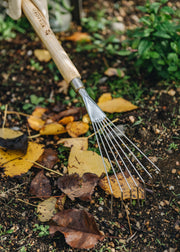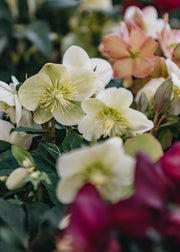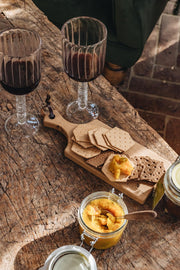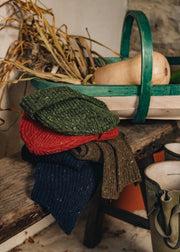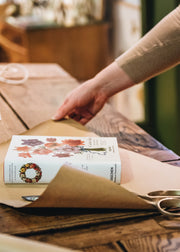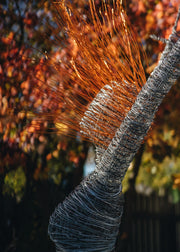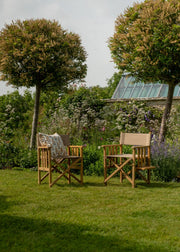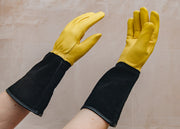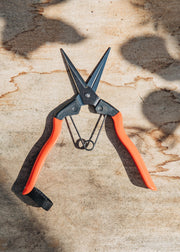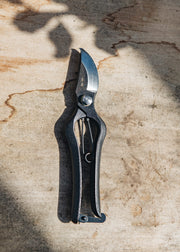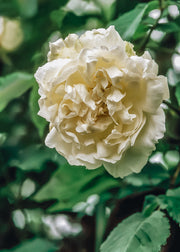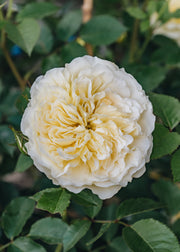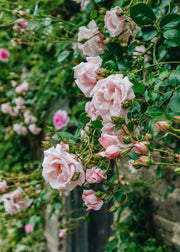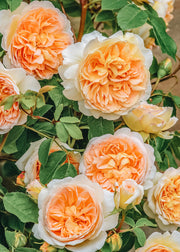How To: Prune Climbing Roses

Pruning is important. Left to their own devices roses will grow too large and become leggy. Approaching a rose with secateurs, at the right time will encourage a good shape and abundant flowers the following season. It is worth remembering not to be scared to cut back roses, they are tough and thrive on a decisive approach. A pruned rose - reduced and devoid of leaves - can look alarmingly bare, but the result will be extremely rewarding. To avoid the risk of spore-borne disease, always clear up behind you as you work and dispose of the unwanted rose material in a green recycling bin, not in your own compost.

Climber or Rambler?
A quick guide to identifying your roses
If you inherit an established garden, it is not always easy to tell if you have a climbing or rambling rose. Generally speaking, climbers will repeat flower throughout the summer from a comparatively restrained framework. A rambling rose will usually flower once, with a mass of small roses making a dramatic show around June, it will have a larger, less restrained, more vigorous habit.
If you believe you have a rambling rose, you can find our helpful guide to pruning here.
Before you start to prune, clean your blades with disinfectant to avoid inadvertently transferring disease. Alongside the tools, it is a good idea to have sturdy gloves and biodegradable jute ties or fixings to hand.
Tools for Pruning Roses
Deadheading is the simplest type of pruning and should be carried out throughout the summer on shrub roses and climbers. Removing spent blooms will stop the formation of rose hips which would take energy away from the rose and lessen the production of further blooms. (This does not apply, however, if it is a variety grown for attractive hips such as Rosa rugosa).
Snip off each fading flower immediately above the nearest side shoot. If it is a multiple bunch of flowers, remove only the spent bloom at the end of its stalk and only cut back to the first shoot on the main stem once all the blooms are spent. Clear up all the dead heads and dispose of them in a recycling green bin, not in your compost.
Any additional cutting back between the summer deadheading and the late winter prune should be limited.

Deadheading Spent Blooms

Rosehips on Rosa Rugosa
It is hard to define exactly when to prune, depending on the severity of the winter, but it should be done at a point when the rose is showing the first signs of growth, normally in January or February; renowned breeder David Austin suggests you should have finished pruning by March. This is also a good time to fertilise the plant and put a mulch of compost around the base of the rose.
In your rose's first year:
A newly planted climber will need little intervention in its first year because it is concentrating on creating an efficient root system.
- Cut back any stems that are growing away from the structural support
- If against a wall or fence, draw down any long stems and tie in at 45 degrees so the shoots will grow vertically along the stem
- Cut out any dead, diseased or damaged wood, as well as any crossing or weak stems
- Remove any remaining foliage and place it with all the bits of pruning in recycling

Cutting back dead wood with loppers

Cutting back stems with secateurs
In its second year:
- Cut back any stems that are growing away from the structural support
- If against a wall or fence, again draw down any long stems and tie in (if against a wall or fence), at 45 degrees
- Cut back the flowering stems to about 15cm (6in) from the main stem
- If the climber is extremely vigorous remove less strong growth to avoid congestion
- Cut out any dead, diseased or damaged wood, as well as any crossing or weak stems
- Remove any remaining foliage and place it with all the bits of pruning in recycling
In its third year, and each year afterwards:
- Repeat the guidance for the second year and if necessary, cut away any weakened growth from the base.

Removing dead wood with a saw


